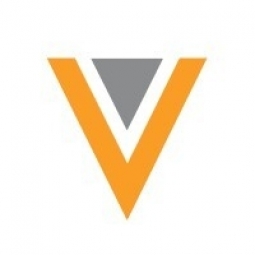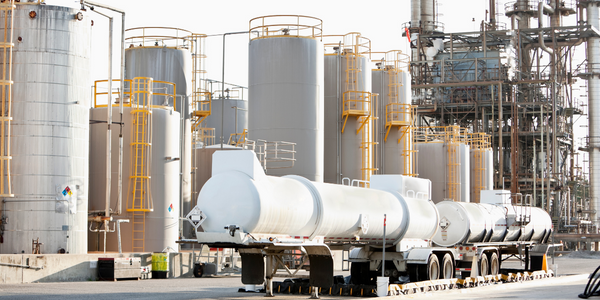Technology Category
- Functional Applications - Enterprise Resource Planning Systems (ERP)
Applicable Industries
- Pharmaceuticals
About The Customer
Roche is a large biopharma company headquartered in Basel, Switzerland. The company is a global leader in pharmaceuticals and diagnostics and is focused on advancing science to improve people's lives. Roche is the world's largest biotech company, with truly differentiated medicines in oncology, immunology, infectious diseases, ophthalmology, and diseases of the central nervous system. Roche is also the world leader in in-vitro diagnostics and tissue-based cancer diagnostics, and a frontrunner in diabetes management. The company's global-to-local content strategy is a key part of its efforts to deliver personalized content and a consistent brand experience to patients and customers around the world.
The Challenge
Roche, a large biopharma company based in Basel, Switzerland, was faced with the challenge of balancing a global content strategy with local needs. The company recognized the need for a global-to-local strategy for several reasons. Firstly, the company wanted to reuse content to limit duplication of effort and cost. Secondly, the global-to-local approach was deemed essential for setting up a modular content model. Thirdly, the strategy would help deliver a framework for personalized content and a consistent brand experience. The company wanted to ensure that patients and customers have the same brand experience regardless of their location. Lastly, operational efficiency was a priority, and the global-to-local blueprint was seen as a way to manage and drive change more easily internally than with external business partners.
The Solution
Roche's solution was to design a global content operations strategy that balanced the autonomy of local markets. The company was mindful of the need to avoid imposing a top-down approach, recognizing that such a narrative would not resonate well. In some cases, global initiatives were led by the company, but in other cases, larger affiliates such as the U.S., France, and Germany took the lead. The company also sought to influence best practices across more autonomous entities, providing guidelines and education about best practices. To measure success, the company defined key performance indicators (KPIs), such as increasing content reuse by a certain percentage or reducing MLR cycle time. The company also used Veeva Pulse Content Metrics to benchmark its performance against others in the industry.
Operational Impact
Quantitative Benefit

Case Study missing?
Start adding your own!
Register with your work email and create a new case study profile for your business.
Related Case Studies.

Case Study
Case Study: Pfizer
Pfizer’s high-performance computing software and systems for worldwide research and development support large-scale data analysis, research projects, clinical analytics, and modeling. Pfizer’s computing services are used across the spectrum of research and development efforts, from the deep biological understanding of disease to the design of safe, efficacious therapeutic agents.

Case Study
Fusion Middleware Integration on Cloud for Pharma Major
Customer wanted a real-time, seamless, cloud based integration between the existing on premise and cloud based application using SOA technology on Oracle Fusion Middleware Platform, a Contingent Worker Solution to collect, track, manage and report information for on-boarding, maintenance and off-boarding of contingent workers using a streamlined and Integrated business process, and streamlining of integration to the back-end systems and multiple SaaS applications.

Case Study
Process Control System Support
In many automated production facilities, changes are made to SIMATIC PCS 7 projects on a daily basis, with individual processes often optimised by multiple workers due to shift changes. Documentation is key here, as this keeps workers informed about why a change was made. Furthermore, SIMATIC PCS 7 installations are generally used in locations where documentation is required for audits and certification. The ability to track changes between two software projects is not only an invaluable aid during shift changes, but also when searching for errors or optimising a PCS 7 installation. Every change made to the system is labour-intensive and time-consuming. Moreover, there is also the risk that errors may occur. If a change is saved in the project, then the old version is lost unless a backup copy was created in advance. If no backup was created, it will no longer be possible to return to the previous state if and when programming errors occur. Each backup denotes a version used by the SIMATIC PCS 7 system to operate an installation. To correctly interpret a version, information is required on WHO changed WHAT, WHERE, WHEN and WHY: - Who created the version/who is responsible for the version? - Who released the version? - What was changed in the version i.e. in which block or module of the SIMATIC PCS 7 installation were the changes made? - When was the version created? Is this the latest version or is there a more recent version? - Why were the changes made to the version? If they are part of a regular maintenance cycle, then is the aim to fix an error or to improve production processes? - Is this particular version also the version currently being used in production? The fact that SIMATIC PCS 7 projects use extremely large quantities of data complicates the situation even further, and it can take a long time to load and save information as a result. Without a sustainable strategy for operating a SIMATIC PCS 7 installation, searching for the right software version can become extremely time-consuming and the installation may run inefficiently as a result.

Case Study
ELI LILLY ADOPTS MICROMEDIA’S ALERT NOTIFICATION SYSTEM
Pharmaceutical production is subject to a strict set of enforced rules that must be adhered to and compliance to these standards is critically necessary. Due to the efforts of WIN 911’s strategic partner Micromedia, Lilly was able to adopt an alarm notification infrastructure that integrated smoothly with their existing workflows and emergency hardware and protocols. These raw energy sources enable the industrial process to function: electricity, WIN-911 Software | 4020 South Industrial Drive, Suite 120 | Austin, TX 78744 USA industrial steam, iced water, air mixtures of varying quality. Refrigeration towers, boilers and wastewater are monitored by ALERT. Eli Lilly identified 15000 potential variables, but limitations compelled them to chisel the variable list down to 300. This allowed all major alarms to be covered including pressure, discharge, quantity of waste water discharged,temperature, carbon dioxide content, oxygen & sulphur content, and the water’s pH.









